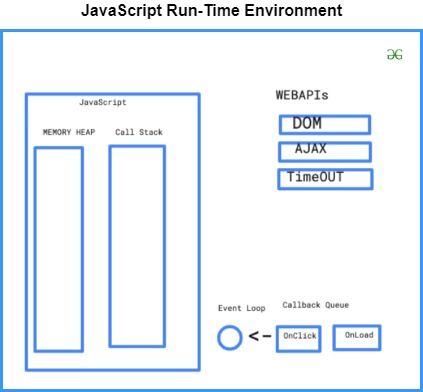Navigating the Single-Threaded Realm: A Comprehensive Exploration of JavaScript's Single-Threaded Nature
 Nishant Tomer
Nishant Tomer
Introduction:
JavaScript, the backbone of web development, operates within the confines of a single-threaded execution model. Understanding the intricacies of its single-threaded nature is crucial for developers striving to build efficient, responsive, and scalable applications. This comprehensive guide aims to unravel the complexities surrounding JavaScript's single-threaded architecture, providing an in-depth exploration of its principles, challenges, and strategies for optimization.
The Single-Threaded Paradigm:
At its core, JavaScript is single-threaded, meaning it executes one operation at a time in a linear fashion. This thread, known as the main thread, handles the execution of code, manipulates the Document Object Model (DOM), and manages events. While this model simplifies certain aspects of development, it also introduces challenges in scenarios where concurrent operations are essential.

Concurrency Challenges:
Blocking Operations:
- JavaScript's single-threaded nature becomes apparent when encountering blocking operations, where one task delays the execution of subsequent tasks. Long-running processes, such as heavy computations or synchronous AJAX requests, can lead to a sluggish user experience.
Responsive UI Concerns:
- Since JavaScript runs on the main thread, time-consuming operations can freeze the user interface, resulting in unresponsiveness. This poses challenges in scenarios where users expect seamless interactions and timely feedback.
Event Loop and Callback Queue:
To mitigate the limitations of a single-threaded architecture, JavaScript incorporates the event loop and callback queue mechanism. The event loop continuously checks the execution stack and callback queue for pending tasks. When the stack is empty, it picks tasks from the queue and executes them, allowing non-blocking asynchronous operations to be seamlessly integrated into the single-threaded paradigm.

Asynchronous JavaScript:
Callbacks:
- Callbacks are a fundamental concept in handling asynchronous operations within a single-threaded environment. They allow functions to be executed once a particular task, often an I/O operation or a timer, is completed.
Promises:
- Promises, introduced to simplify asynchronous code, provide a cleaner and more readable syntax for managing asynchronous tasks. They allow developers to handle the result or error of an asynchronous operation in a structured manner.
Async/Await:
- The Async/Await syntax, built on top of Promises, further enhances the readability of asynchronous code. It allows developers to write asynchronous code in a more synchronous style, making it easier to reason about complex workflows.
Optimizing Single-Threaded Performance:
Web Workers:
- Web Workers enable the execution of code in the background, separate from the main thread. This allows developers to offload resource-intensive tasks, enhancing overall performance.
Breaking Tasks:
- Breaking down tasks into smaller, more manageable units can prevent blocking operations, ensuring that the main thread remains responsive.
Optimizing DOM Manipulation:
- Efficient DOM manipulation practices, such as batching updates and utilizing virtual DOM, contribute to a smoother user experience within the constraints of a single thread.
Advantages of Single-Threaded JavaScript:
Simplicity:
- The single-threaded model simplifies development by eliminating the complexities associated with multi-threading, such as race conditions and deadlocks.
Predictable Execution:
- The linear execution of code ensures predictable outcomes, making it easier for developers to reason about their applications.
Ease of Debugging:
- Debugging is facilitated by the straightforward flow of code execution, aiding developers in identifying and resolving issues efficiently.
Conclusion:
JavaScript's single-threaded nature, while presenting challenges, also forms the foundation of its simplicity and predictability. By comprehending the nuances of the event loop, asynchronous patterns, and optimization strategies, developers can navigate the single-threaded realm with finesse. This comprehensive exploration aims to equip developers with the knowledge needed to harness the power of single-threaded JavaScript and build high-performance, responsive web applications.
Thank you for your time. Hope you had a great read.
Subscribe to my newsletter
Read articles from Nishant Tomer directly inside your inbox. Subscribe to the newsletter, and don't miss out.
Written by

Nishant Tomer
Nishant Tomer
I'm a seasoned backend web developer with a passion for crafting robust and scalable solutions. With expertise in languages such as C/C++, JavaScript, and Node.js and a keen eye for optimizing database performance, I specialize in building the backbone of web applications. I've successfully implemented and maintained various backend systems, ensuring seamless functionality and a positive user experience. I'm excited about the prospect of collaborating on impactful projects and contributing my skills to innovative solutions.